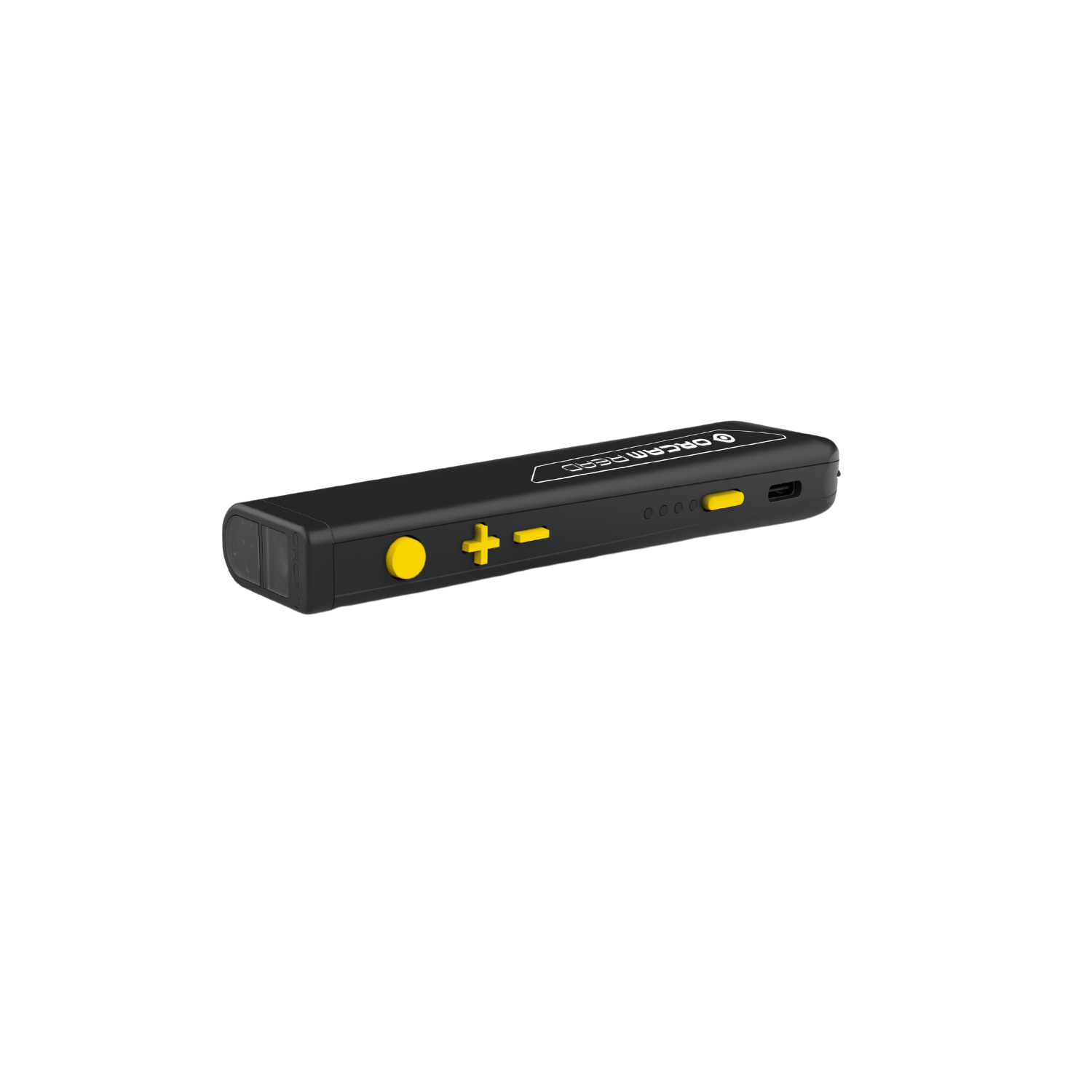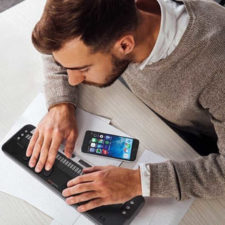OCR Devices for the Blind: Converting Print to Speech in Real-Time
OCR Devices for the Blind: Converting Print to Speech in Real-Time
Blog Article
Discover Cutting-edge Tools Created for the Aesthetically Impaired
The development of innovative tools for the visually damaged represents a considerable development in access and self-reliance. Technologies such as smart glasses with AI capacities and mobile applications designed to supply auditory descriptions are reshaping everyday experiences for customers.
Smart Glasses for Navigation
%20(1).webp)
Smart glasses developed for navigating are reinventing the method aesthetically impaired individuals connect with their environment. These sophisticated tools use a mix of camera modern technology, man-made intelligence, and auditory feedback to provide real-time info regarding environments. By using obstacle detection systems, smart glasses can notify users to possible hazards, enabling safer wheelchair in both unknown and familiar settings.
The combination of GPS technology even more enhances navigation abilities, allowing users to receive acoustic instructions as they move. This hands-free approach not just fosters freedom yet additionally equips visually impaired people to browse urban landscapes with raised self-confidence. Additionally, lots of wise glasses are outfitted with functions that identify spots and road indications, providing contextual details that enhances the customer experience.
In addition, the advancement of these devices is constantly progressing, with firms functioning to improve the accuracy of object acknowledgment and broaden the series of navigational functions. As smart glasses come to be much more accessible and budget friendly, they hold the potential to substantially transform everyday life for visually damaged customers. Eventually, these cutting-edge tools stand for an essential step towards inclusivity, offering improved flexibility and a higher sense of autonomy for people browsing the globe around them.

Mobile Apps for Daily Living
How can mobile applications enhance the every day lives of aesthetically impaired people? Mobile applications are transforming the method visually impaired customers browse their environments, take care of everyday jobs, and access details. These applications offer essential assistance via various functionalities, cultivating independence and enhancing high quality of life.
Several innovative mobile apps are created particularly for day-to-day living. For instance, apps like Be My Eyes link visually impaired users with sighted volunteers via video phone calls, enabling them to obtain real-time aid with tasks such as reviewing labels or browsing strange spaces. Seeing AI, established by Microsoft, makes use of artificial knowledge to describe surroundings, reviewed text, and determine things, efficiently changing a smartphone right into an effective device for day-to-day help.
Furthermore, navigating apps tailored for the aesthetically impaired, such as Aira and BlindSquare, offer audio-based instructions and environmental details, making it possible for users to traverse their environments safely and with confidence. Beyond navigating and immediate support, mobile apps also support company and job management, with attributes that help users establish reminders, produce to-do lists, and track consultations. In summary, mobile applications function as important sources, empowering aesthetically damaged individuals to lead even more independent and satisfying lives.
Wearable Technologies for Aid
Empowerment via innovation is increasingly obvious in the realm of wearable gadgets designed to aid visually impaired people. These innovative devices incorporate perfectly into life, enhancing navigation and giving necessary feedback to customers. For example, wise glasses equipped with cams can read and recognize faces text aloud, allowing individuals to connect even more confidently in professional and social setups.
One more significant innovation is using haptic comments systems in wearable gadgets. These systems utilize vibrations or various other tactile signals to share details regarding the user's setting, such as obstacles or adjustments in surface, boosting wheelchair and security. Wearable technologies likewise include wristbands that attach to mobile phones, informing individuals to alerts through refined resonances, thus boosting connection without dependence on aesthetic cues.
As these technologies remain to progress, they are not only improving freedom for visually damaged people but additionally promoting a better sense of addition in culture. By bridging the space in between challenges encountered in everyday living and the capacity for autonomy, wearable modern technologies act as essential devices in the i was reading this quest for equality and empowerment for those with visual problems.
Audio Description Devices
Sound summary tools play a critical function in enhancing availability for visually impaired people, offering them with the capacity to engage with aesthetic media. OCR devices for the blind. These tools supply narrated descriptions of key aesthetic elements in films, tv programs, and live efficiencies, making certain that users can completely comprehend the context and feelings shared through visuals
Sound summary can be incorporated into different systems, consisting of streaming solutions, movie theater screenings, and live theater. Numerous popular streaming solutions currently consist of audio description as an accessibility function, enabling customers to pick it easily. Along with traditional media, specialized apps additionally exist, giving audio summaries for art exhibits, museums, and various other cultural events.
The effectiveness of audio summary depends upon the skill of the storytellers, that have to communicate aesthetic details succinctly without interfering with webpage the original sound. Developments in this field are also paving the method for even more personalized experiences, where users can change the level of detail and pacing according to their choices.
Braille Innovations and Devices
Braille tools and innovations have actually substantially changed the method aesthetically impaired individuals connect with message and information. Modern improvements have led to the growth of versatile devices that boost proficiency and independence amongst customers.
Furthermore, mobile Braille notetakers incorporate typical Braille input with contemporary capabilities, facilitating note-taking, organizing, and record editing and enhancing on the go. Braille displays and notetakers. These compact tools frequently feature text-to-speech capabilities, connecting the void in between Braille and auditory info
On top of that, ingenious Braille printers have arised, permitting customers to generate Braille labels, papers, and academic materials effectively. This access cultivates higher engagement in academic and professional settings, eventually promoting inclusivity.
Furthermore, research into smart Braille innovations remains to expand. Instruments that incorporate synthetic knowledge are being explored to offer real-time navigating help and contextual info, enhancing the user experience in diverse settings. Overall, these technologies mirror a commitment to equipping aesthetically impaired individuals via modern technology, guaranteeing they can quickly gain access to and engage with the globe around them.

Verdict
The improvement of innovative additional info tools for the visually impaired dramatically improves independence and high quality of life. Smart glasses, mobile applications, wearable modern technologies, audio summary devices, and Braille advancements jointly encourage people by providing important navigation assistance, ecological understanding, and enhanced reading experiences. These technologies not only foster better inclusion but additionally promote freedom in daily activities, inevitably adding to a more fair and available society for visually damaged people. Proceeded development in this area holds pledge for additional improvements.
As wise glasses end up being extra budget friendly and accessible, they hold the potential to dramatically change everyday life for visually damaged customers. Mobile applications are revolutionizing the method aesthetically impaired individuals navigate their settings, handle everyday tasks, and accessibility info. Apps like Be My Eyes connect visually damaged individuals with sighted volunteers by means of video phone calls, enabling them to receive real-time assistance with jobs such as reviewing labels or navigating strange rooms.Additionally, navigating applications tailored for the visually impaired, such as Aira and BlindSquare, offer audio-based directions and ecological info, enabling individuals to traverse their surroundings safely and with confidence.The development of cutting-edge tools for the aesthetically impaired considerably enhances self-reliance and quality of life.
Report this page